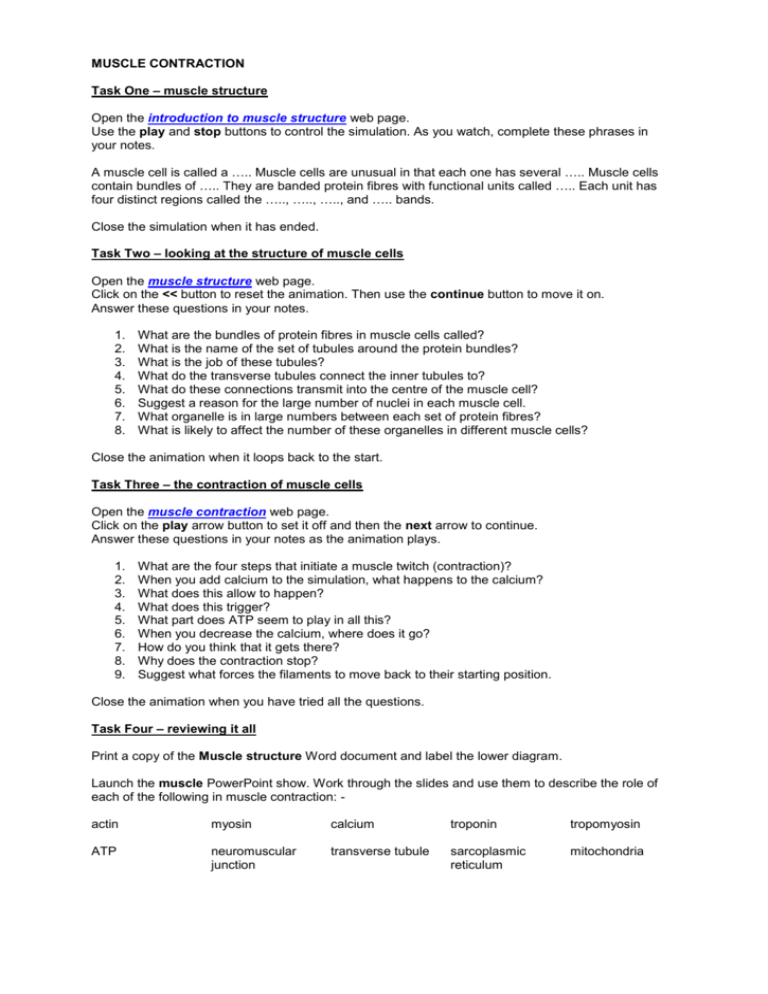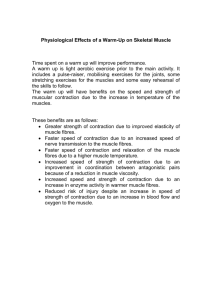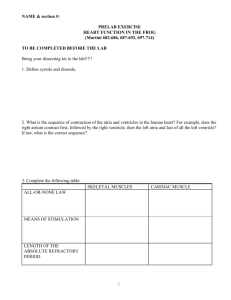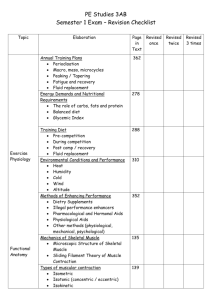MUSCLE CONTRACTION
advertisement

MUSCLE CONTRACTION Task One – muscle structure Open the introduction to muscle structure web page. Use the play and stop buttons to control the simulation. As you watch, complete these phrases in your notes. A muscle cell is called a ….. Muscle cells are unusual in that each one has several ….. Muscle cells contain bundles of ….. They are banded protein fibres with functional units called ….. Each unit has four distinct regions called the ….., ….., ….., and ….. bands. Close the simulation when it has ended. Task Two – looking at the structure of muscle cells Open the muscle structure web page. Click on the << button to reset the animation. Then use the continue button to move it on. Answer these questions in your notes. 1. 2. 3. 4. 5. 6. 7. 8. What are the bundles of protein fibres in muscle cells called? What is the name of the set of tubules around the protein bundles? What is the job of these tubules? What do the transverse tubules connect the inner tubules to? What do these connections transmit into the centre of the muscle cell? Suggest a reason for the large number of nuclei in each muscle cell. What organelle is in large numbers between each set of protein fibres? What is likely to affect the number of these organelles in different muscle cells? Close the animation when it loops back to the start. Task Three – the contraction of muscle cells Open the muscle contraction web page. Click on the play arrow button to set it off and then the next arrow to continue. Answer these questions in your notes as the animation plays. 1. 2. 3. 4. 5. 6. 7. 8. 9. What are the four steps that initiate a muscle twitch (contraction)? When you add calcium to the simulation, what happens to the calcium? What does this allow to happen? What does this trigger? What part does ATP seem to play in all this? When you decrease the calcium, where does it go? How do you think that it gets there? Why does the contraction stop? Suggest what forces the filaments to move back to their starting position. Close the animation when you have tried all the questions. Task Four – reviewing it all Print a copy of the Muscle structure Word document and label the lower diagram. Launch the muscle PowerPoint show. Work through the slides and use them to describe the role of each of the following in muscle contraction: actin myosin calcium troponin tropomyosin ATP neuromuscular junction transverse tubule sarcoplasmic reticulum mitochondria







